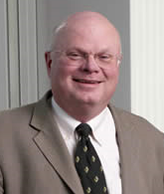HER2-Positive Breast Cancer Demonstrates Heterogenous Outcomes
The discovery of Human Epidermal growth factor Receptor 2 (HER2) positive breast cancer subtypes is not yet complete, according to Mark D. Pegram, MD, who will be delivering a presentation on the different clinical outcomes of these subtypes at the Miami Breast Cancer Conference this week.
Mark D. Pegram, MD

The discovery of human epidermal growth factor geceptor 2 (HER2) positive breast cancer subtypes is not yet complete, according to Mark D. Pegram, MD, who will be delivering a presentation on the different clinical outcomes of these subtypes at the Miami Breast Cancer Conference this week.
He is a professor of medicine at the Miller School of Medicine as well as the head of Translational Research in the Breast Cancer Institute at the University of Miami. Dr. Peagram spoke with CancerNetwork from his office in Miami, and shared his thoughts on HER2-positive patients.
“We know, clinically, that HER2-positive patients have a range of clinical phenotypes. Some respond to HER2-targeted therapy, while others don't. Some color-express steroid receptors, while others don't.
“Clearly there are different phenotypes based on fluorescence in situ hybridization {FISH) testing, HER2 gene copy numbers-some have high copy numbers, some less- and some have ploidy, multiple copies of the whole chromosome 17.
“And there are other alterations in the HER2 gene that have just come to light such as kinase domain mutations, which, though rare, are present in breast cancer and its a challenging issue that we're going to have to wrestle with.
“Also, there are different types of the HER2 receptor. For example, there are truncated species of the HER2 receptor that may confer resistance to antibodies. Clinically, this is also something that we're going to have to take into consideration moving into the future.
“Clearly, based on gene-expression profiling, and DNA-sequence data, there are sub-groups within the group that we call HER2 positive. For example, on gene-expression profiles, there are patients who exhibit a HER2 gene-expression profile who don't have amplification of the gene.
“So, one wonders, what are the differences among these patients? Should they be considered HER2 positive? Should they be considered for HER2-positive therapeutics?
“There are other examples, in terms of mutational analysis. There are some patients who have HER2 gene amplification but also have a PI-3 kinase domain mutation. This is very interesting and could suggest patterns of resistance that might emerge as result of downstream signaling pathway constituent mutations. Should those be targeted in parallel, or perhaps in sequence, with HER2-targeted therapy?
“So, we have a lot of work to do. One of the main difficulties is the number of patients that have the HER2 alteration, it's only about 20% that have gene amplification. There are far fewer still that have mutations of the HER2 gene. And then if you look at specific subtypes that have alterations-other mutations-downstream, activation of parallel pathways, et cetera, those are also, probably, small fractions.
“To do clinical trials is a real challenge. It would not be possible to do a randomized phase III study of some of these small subsets.
“We're going to have to be clever in terms of how we develop therapeutics in these small niches. That's going to be huge challenge in the therapeutic development field.”